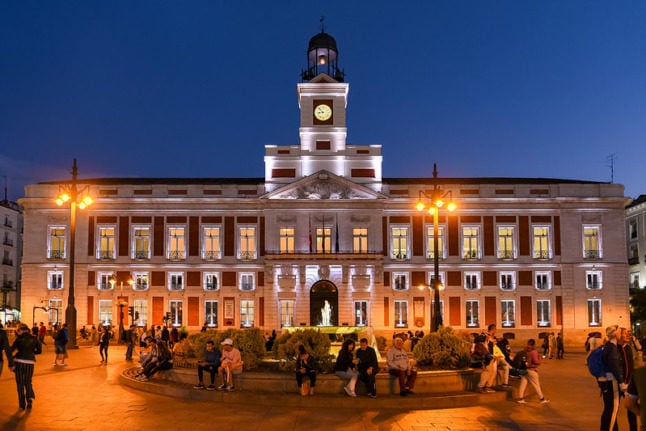Why is Spain in the wrong time zone?
Madrid lies directly south of London. Spain is geographically in line with the UK and Portugal. It makes sense, then, that Spain was in the Greenwich Mean Time (GMT) zone until around 75 years ago.
But that all changed in 1940. With Nazi Germany occupying Belgium, Holland, and recently invading France, Spain’s own fascist dictator, Francisco Franco, travelled to the French border to meet with Hitler, the man he and many other believed would go on to dominate Europe.
The momentum was clearly with the Nazis, at the time, and Italy had already pledged its support to Hitler. Although he wanted the same from Spain, Franco, however, didn’t have much to offer. With the country ravaged by its own recent Civil War – in which Franco’s victory was heavily supported by Hitler – Franco felt obliged to make a gesture of some sort.
Although ultimately remaining neutral in the war, Franco decided to show his support for Hitler by agreeing to put Spain’s clocks forward by an hour in an act of solidarity with Nazi Germany.
Spain has remained in the Central European Time zone ever since, in line with countries as far east as Poland. That means that Madrid currently has the same time as Warsaw in Poland 2,290km away but is one hour ahead of Lisbon which is only 502 km away.
The consequences of Spain being in the wrong time zone
But Franco’s decision all those years ago isn’t just a quirk of Spanish history, or testament to the extent to which the legacy of that period still looms over Spanish society, it was a decision that, experts say, has had a lasting impact on Spanish culture and society that underpins everything from Spaniard’s sleep cycles and meal times to the country’s birth rates and economic growth.
In recent years there have been calls to make the switch back to GMT because many believe the time zone quirk is affecting Spaniard’s productivity and quality of life. In 2013 a Spanish national commission concluded that Spaniards sleep almost an hour less than the European average, and that this led to increased stress, concentration problems, both at school and work, and workplace accidents.
Some experts believe this explains the Spanish dependence on siestas – that is, that the lack of sleep makes them necessary – but in reality the siesta has been a consistent feature of Spanish life for centuries for many of the same reasons it still is today: in southern Spain, the fierce summer temperatures make it necessary to stay at home during the afternoon.

One effect of the siesta however is that the break in the day means Spaniards work the most hours in Europe yet at one of the continent’s lowest levels of productivity. A lack of sleep contributes to siesta taking which, in turn, means Spaniards work later into the evening and could partly explain Spain’s notoriously nocturnal lifestyles and late meal times.
Despite the country running on CET, Spaniards’ eating patterns roughly mirror GMT. Many Spaniards eat lunch at what would be 1 or 1.30pm in London (the traditional 2 or 2.30pm in Spain) and dinner at a reasonable 8pm in London (but 9pm or even 10pm as is customary in many parts of Spain).
Making the change and returning to GMT would, according to Nuria Chinchilla, professor at Spain’s IESE business school, help Spaniards “return to the natural order of our circadian rhythm (our 24-hour physiological cycle) that goes with the sun… and the sun in Greenwich, not Germany”.
“If we don’t (change to GMT) we lengthen the day, eat very late and then don’t sleep,” she added.
Why hasn’t Spain moved to the right time zone yet?
The debate about which time zone Spain belongs in was reinvigorated following recent proposals at the EU level to scrap entirely the daylight savings custom.
In 2018 the EU Commission announced a proposal to abolish the custom after polling showed that 80 percent of Europeans are in favour of staying permanently on summertime. This debate naturally had many in Spain wondering about whether they were in the right time zone.
But owing to a combination of the COVID-19 pandemic, Brexit, and various other bureaucratic difficulties, the proposal was shelved. Member states cannot decide unilaterally on the question of daylight savings, but they can decide which time zone they want to be in.
Spain has had various commissions over the years exploring the impact of daylight savings and time zones, but no concrete proposals over a return to GMT have ever been made, despite the benefits experts claim it could bring.
Although the government’s focus has been drawn by more pressing issues in recent years – and the issue of time and daylight savings shelved at the European level – expect discussion of whether Spain is actually even in the right time zone this weekend when the clocks do go back, or if the linked issue of daylight savings is eventually taken off the shelf at the European level.




 Please whitelist us to continue reading.
Please whitelist us to continue reading.
Member comments